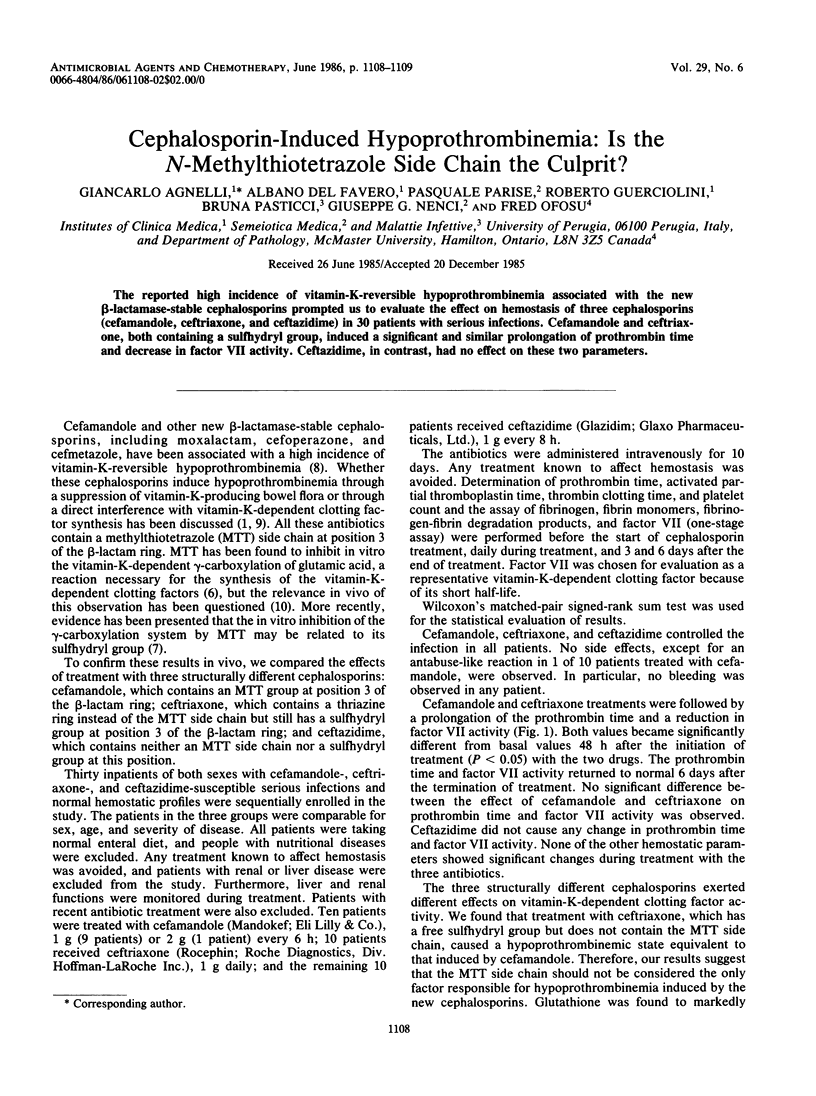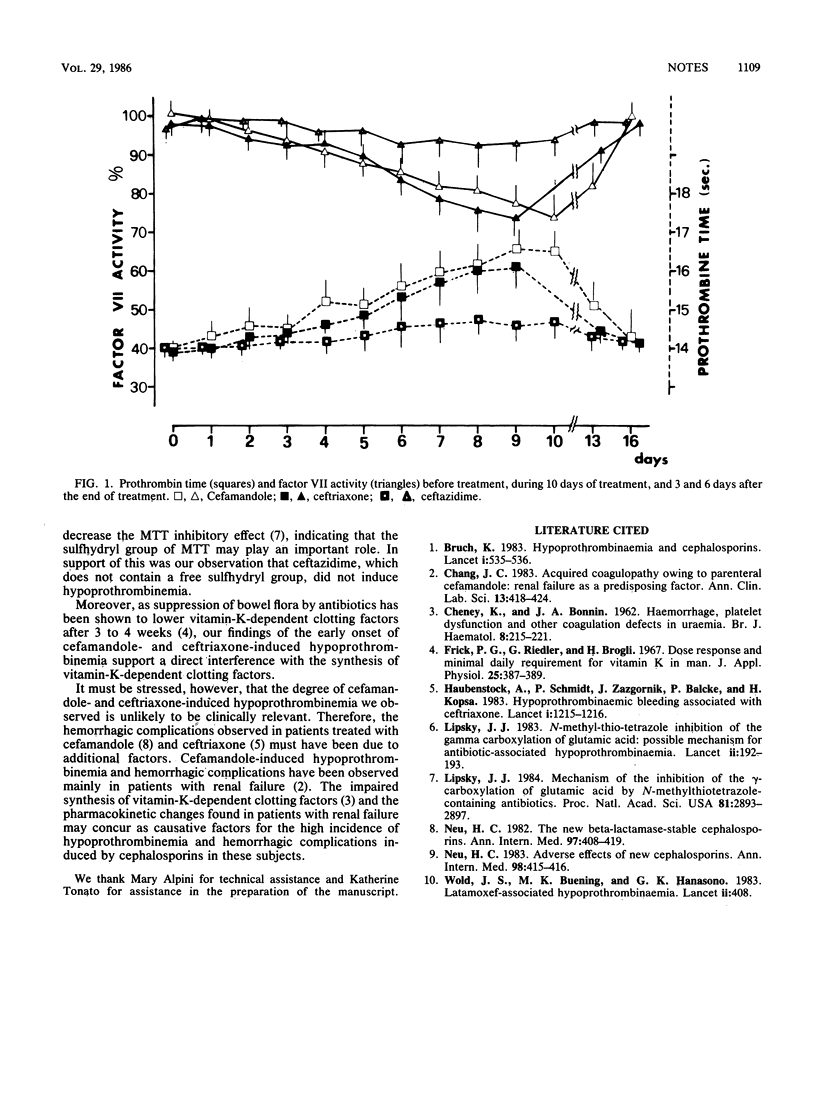Abstract
The reported high incidence of vitamin-K-reversible hypoprothrombinemia associated with the new beta-lactamase-stable cephalosporins prompted us to evaluate the effect on hemostasis of three cephalosporins (cefamandole, ceftriaxone, and ceftazidime) in 30 patients with serious infections. Cefamandole and ceftriaxone, both containing a sulfhydryl group, induced a significant and similar prolongation of prothrombin time and decrease in factor VII activity. Ceftazidime, in contrast, had no effect on these two parameters.
Full text
PDF

Selected References
These references are in PubMed. This may not be the complete list of references from this article.
- Bruch K. Hypoprothrombinaemia and cephalosporins. Lancet. 1983 Mar 5;1(8323):535–536. doi: 10.1016/s0140-6736(83)92226-2. [DOI] [PubMed] [Google Scholar]
- CHENEY K., BONNIN J. A. Haemorrhage, platelet dysfunction and other coagulation defects in uraemia. Br J Haematol. 1962 Jul;8:215–222. doi: 10.1111/j.1365-2141.1962.tb06514.x. [DOI] [PubMed] [Google Scholar]
- Chang J. C. Acquired coagulopathy owing to parenteral cefamandole: renal failure as a predisposing factor. Ann Clin Lab Sci. 1983 Sep-Oct;13(5):418–424. [PubMed] [Google Scholar]
- Frick P. G., Riedler G., Brögli H. Dose response and minimal daily requirement for vitamin K in man. J Appl Physiol. 1967 Sep;23(3):387–389. doi: 10.1152/jappl.1967.23.3.387. [DOI] [PubMed] [Google Scholar]
- Haubenstock A., Schmidt P., Zazgornik J., Balcke P., Kopsa H. Hypoprothrombobinaemic bleeding associated with ceftriaxone. Lancet. 1983 May 28;1(8335):1215–1216. doi: 10.1016/s0140-6736(83)92487-x. [DOI] [PubMed] [Google Scholar]
- Lipsky J. J. Mechanism of the inhibition of the gamma-carboxylation of glutamic acid by N-methylthiotetrazole-containing antibiotics. Proc Natl Acad Sci U S A. 1984 May;81(9):2893–2897. doi: 10.1073/pnas.81.9.2893. [DOI] [PMC free article] [PubMed] [Google Scholar]
- Lipsky J. J. N-methyl-thio-tetrazole inhibition of the gamma carboxylation of glutamic acid: possible mechanism for antibiotic-associated hypoprothrombinaemia. Lancet. 1983 Jul 23;2(8343):192–193. doi: 10.1016/s0140-6736(83)90174-5. [DOI] [PubMed] [Google Scholar]
- Neu H. C. The new beta-lactamase-stable cephalosporins. Ann Intern Med. 1982 Sep;97(3):408–419. doi: 10.7326/0003-4819-97-3-408. [DOI] [PubMed] [Google Scholar]
- Wold J. S., Buening M. K., Hanasono G. K. Latamoxef-associated hypoprothrombinaemia. Lancet. 1983 Aug 13;2(8346):408–408. doi: 10.1016/s0140-6736(83)90381-1. [DOI] [PubMed] [Google Scholar]


